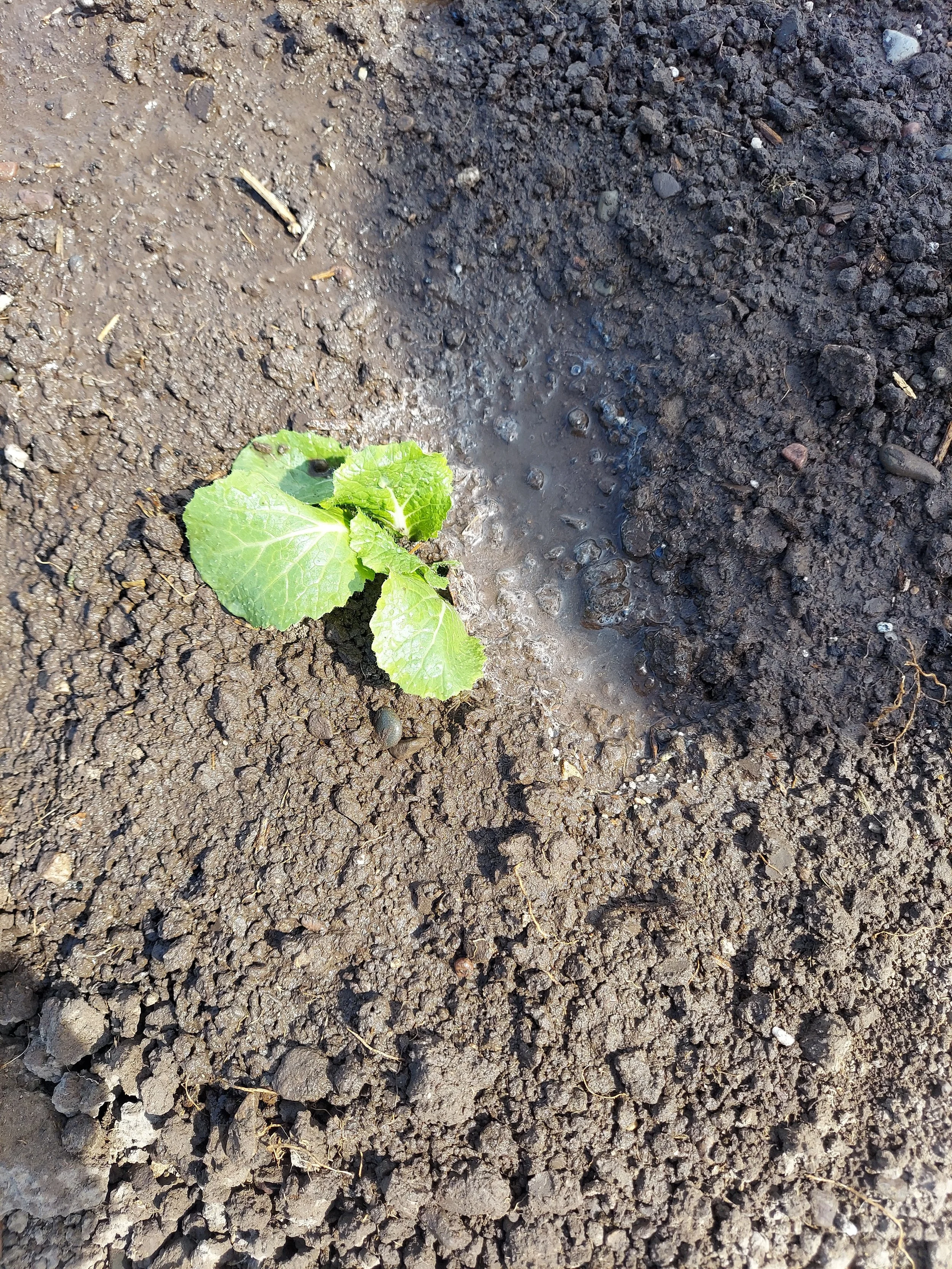Planting Wise
Hello everyone, DeHanza Kwong, Community Gardens Coordinator here.
Recently, I had the opportunity to visit the farmers at the Orchard Gardens Neighborhood Farm & Community Garden while farm director Clare Vergobbi and farm assistant Liam Cody were planting Napa cabbage. As someone who usually works with a diverse group of gardeners growing on a smaller scale, it is always a fun and informative experience seeing what it takes to grow the thousands of pounds of food our farmers produce for the Missoula community. Here are some tips to use at the beginning for maximum future yield straight from the farmers:
The farmers measuring their beds to determine how many plants can fit into the space.
Plan It Out
Make sure to map out your beds according to the best mature version of your produce. Spend some time researching to find the recommended spacing for the variety you want to grow. You may need to plant further apart than you think to account for root spreading as the plant (hopefully) grows into a fantastic producer. Crowding means they cannot grow to their full potential. If too many plants pop up after direct seeding, thin them by removing and composting smaller seedlings until you have appropriate spacing.
The farmers using a wooden measuring tool to make sure plants are correctly spaced.
Consider Depth
When transplanting seedlings or starting seeds, make sure that the plant is deep enough into the ground. Exposed roots mean that the plant has a greater chance of drying out. If your plant falls over when you water, you must plant it deeper. Strong foundations will lead to higher survival rates.
Reduce Stress & Use Cover
Before directly putting them into the ground, reduce stress for your plant by acclimating them to outdoor life. Place them outside for the day to ease going from the temperature-controlled greenhouse or your home to the ground. Covering the plants with row cover or "reemay" can also prevent them from getting too cold and help retain moisture. Hardened plants will have an easier time resisting pests and diseases.
A seedling in standing water.
Water Well
The first time you water is crucial. Water and then wait. Remember that water needs to soak into the soil, and you are looking for the earth to darken in color. Water until there is a puddle of standing water around your transplant when you first put them into the ground.
Hopefully, these tips can help your journey. Consulting others with more experience and researching to become more knowledgeable about your favorite varieties will help in the long run. I recommend starting with the back of your seed packet or the label on the seedling's pot.
Finally, remember always to ask questions. Learning to garden is a different journey for everyone. Do not be afraid to make mistakes and take notes for next year. You are doing great.
Happy growing!




